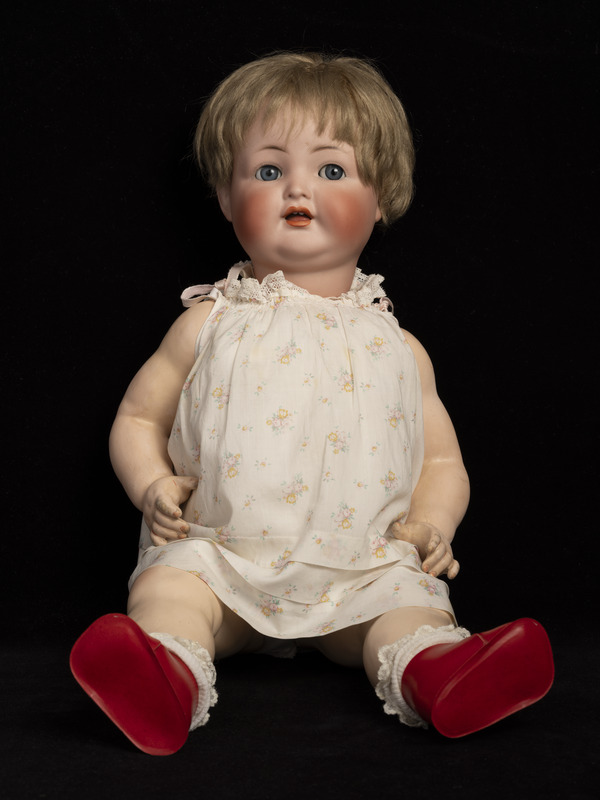Biographical/Historical Information
Marianne Salinger had received this doll, whom she named Margot, in Germany as a child. When she left Berlin with her mother and brother in 1939, Marianne brought Margot the doll with her. On arrival, she stayed with her mother's friend, who was already living in the United States. The family friend sewed a new outfit for Margot, which is what the doll is currently wearing.
Marianne Salinger was born in Berlin on Dec. 16, 1923, the daughter of Walter Salinger and Trude née Ginsburg. The couple also had an older son, Fritz (Fred) Salinger. After 1933, Trude discovered some distant cousins in New York and managed to obtain an affidavit of support, which allowed the family to immigrate to the United States. In June of 1939 they arrived in the United States and settled in Kew Gardens, NY. Trude and Walter Salinger separated; he eventually moved to California and died on a trip to Germany in Bad Kissingen. Fred served in the United States Army in World War II and graduated from Pennsylvania Military College with a degree in engineering. He worked as plant engineer for companies like Chrysler in Delaware and Glidden in Baltimore. He died of lung cancer at the age of 72. Marianne went to Paris at the end of the war to live with Jacques and Nina Ginsburg, the children of Simon Ginsburg and Annemarie Oppenheimer, who had perished in Auschwitz, and their paternal uncle Matwei Ginsburg. Back in New York, she attended Cooper Union in Manhattan and opened her own design studio in Forest Hills, Queens. She worked with many Fifth Avenue stores on custom-made window displays and store decorations. After several years, she was offered the manager's position of the St. Regis Flower shop and later joined Elizabeth Arden as the salon decorator. Her last position was as an office manager in a structural engineering firm where she stayed for 12 years. After her retirement she volunteered for the Leo Baeck Institute. Marianne Salinger died on Jan. 21, 2025, at age 101.
Reproductions and Permissions
We welcome fair use of this content. Please credit the Leo Baeck Institute in your citation. For usage policies and to request higher resolution images, see Reproductions and Permissions.
Citation
Adolf Hulss: Margot the doll, Leo Baeck Institute, 2025.13.
